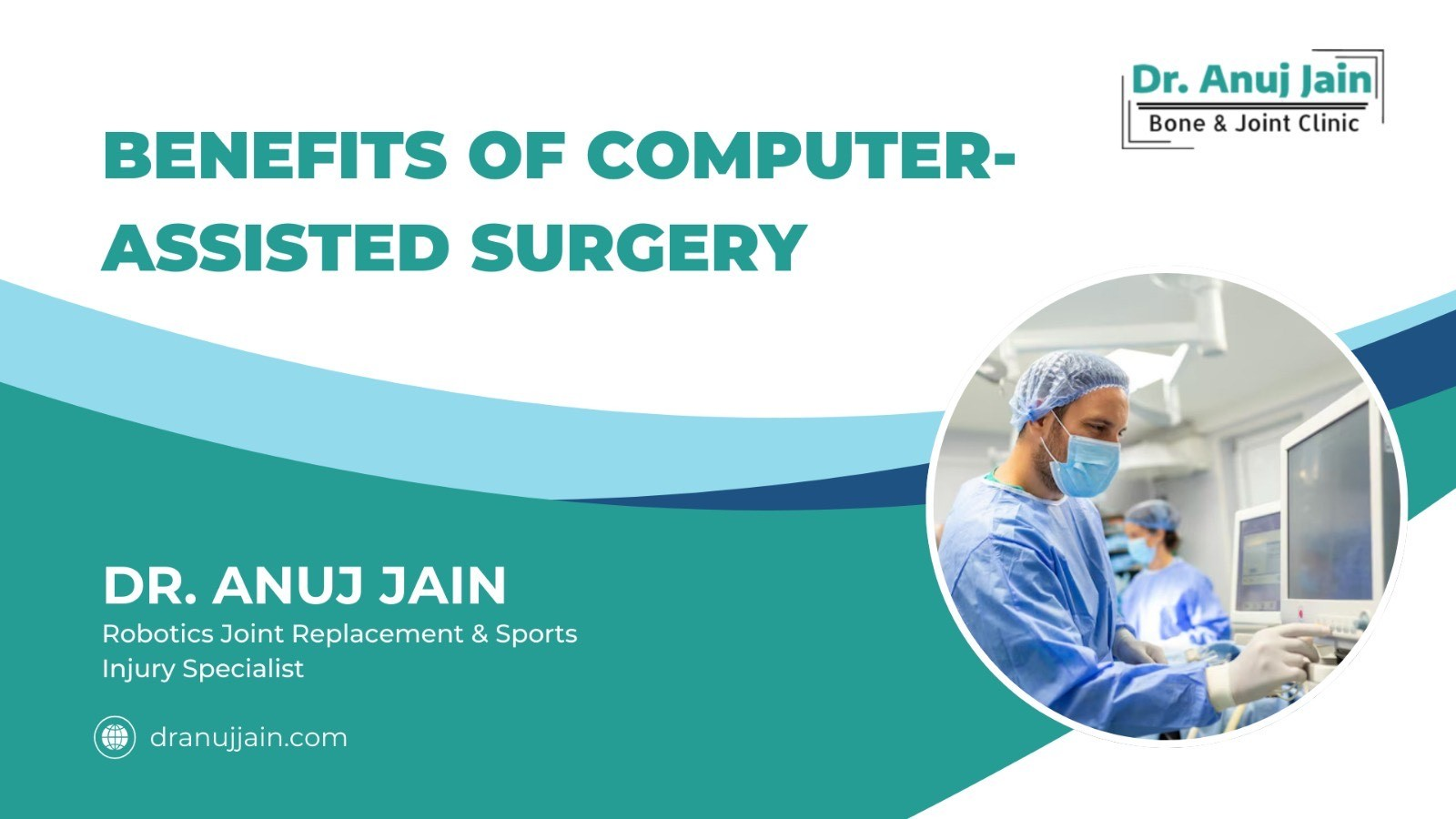Benefits of Robotic-Assisted Surgery in Orthopedics - Dr.Anuj Jain

In the ever-evolving field of orthopedic surgery, technological advancements have significantly improved surgical precision, efficiency, and patient outcomes. One of the most groundbreaking innovations is robotic-assisted surgery (RAS), a technique that integrates digital technology to enhance surgical accuracy. Renowned orthopedic surgeon Dr. Anuj Jain emphasizes the importance of CAS in modern orthopedic procedures, particularly in joint replacement and trauma surgeries.
What is Robotic-Assisted Surgery (RAS)?
Robotic-assisted surgery utilizes real-time imaging, navigation systems, and advanced software to guide surgeons during procedures. This technology enables precise bone cuts, accurate implant placements, and better alignment of joints, ultimately reducing complications and improving long-term outcomes for patients.
Key Benefits of Robotic-Assisted Surgery in Orthopedics
1. Enhanced Precision and Accuracy
Traditional orthopedic surgeries rely on the surgeon’s expertise and manual measurements. However, RAS provides real-time 3D visualization, ensuring unparalleled precision in bone alignment and implant positioning. Dr. Anuj Jain highlights that this level of accuracy is particularly beneficial in knee and hip replacements, where even minor misalignments can impact joint function.
2. Minimally Invasive Approach
With RAS, surgeons can perform minimally invasive procedures, reducing the need for large incisions. This leads to:
- Less blood loss
- Reduced post-operative pain
- Lower risk of infections
- Faster recovery times
3. Improved Implant Longevity
One of the primary reasons for joint replacement failure is implant misalignment. RAS ensures optimal positioning, which enhances the longevity of the implants and improves joint stability. Dr. Anuj Jain explains that well-aligned implants reduce wear and tear, ultimately decreasing the likelihood of revision surgeries.
4. Personalized Surgical Planning
robotic-assisted surgery allows for patient-specific surgical planning using CT scans and MRI data. This tailored approach ensures that each procedure is customized to the patient’s anatomy, leading to better functional outcomes.
5. Reduced Surgical Complications
By providing real-time feedback and guiding surgeons through each step of the procedure, RAS helps minimize human errors and reduces the risk of complications such as nerve damage, uneven limb length, or improper implant positioning
6. Faster Recovery and Rehabilitation
Patients who undergo RAS-assisted surgeries typically experience quicker recovery times due to precise incisions and reduced tissue trauma. Dr. Anuj Jain notes that faster recovery enables patients to resume daily activities sooner, improving their overall quality of life
The Future of Robotic-Assisted Surgery
As technology continues to evolve, the integration of robotics and artificial intelligence (AI) in orthopedic surgeries is expected to further enhance precision and patient outcomes. Dr. Anuj Jain believes that adopting these advanced techniques will revolutionize orthopedic care, making surgeries safer, more efficient, and highly successful
Conclusion for Robotic-Assisted Surgery
Robotic-assisted surgeries have transformed the field of orthopedics by improving precision, reducing complications, and ensuring better patient outcomes. With experts like Dr. Anuj Jain at the forefront of utilizing these advanced techniques, patients can benefit from cutting-edge treatment options that enhance mobility and overall well-being. As technology advances, RAS will continue to play a pivotal role in the future of orthopedic surgery.






